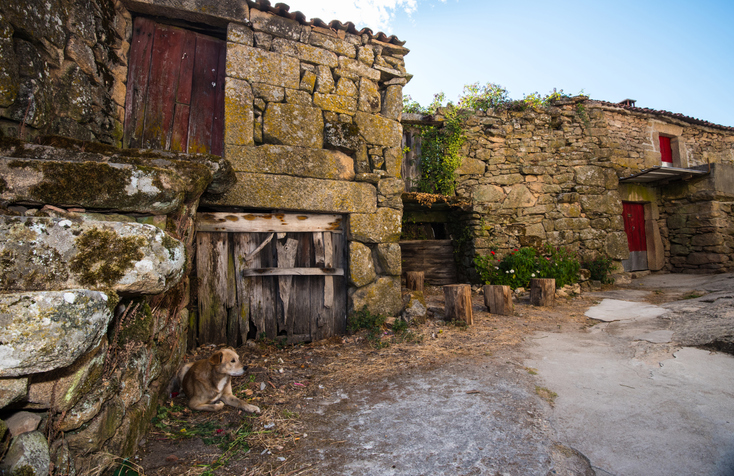Immigration seen as the only alternative to depopulation
A study on depopulation recently published by the Centre for Demographic Studies (CED) at the UAB points to immigration as the alternative to the depopulation of towns in Spain due to the progressive ageing of the population and low birth rates. This is one of the conclusions of a study conducted by researchers on the factors behind depopulation between 1960 and 1981, with the objective of understanding the current dynamics of this phenomenon in Spain. The study explores aspects scarcely known until now on this specific period of rural exodus, which can draw conclusions on the future.

The first geographic isolation in Spain took place in a fully functioning rural world; what is happening now takes place in an empty world with scarce expectations for regeneration.
The study entitled "Despoblació 1.0: la geografia i els factors del declivi demogràfic rural a l'Espanya del Desenvolupament", recently published by the UAB Centre for Demographic Studies in the journal Perspectives Demogràfiques, explores the factors that drove the demographic decline of the rural world between 1960 and 1981, when 65% of the depopulation of rural areas was concentrated. It delves into the causes that led to demographic emptying at that time in order to understand the current dynamics of depopulation processes, and looks at immigration as the only current alternative to depopulation.
Els mecanismes que van afavorir la despoblació a l'Espanya del “desarrollismo” (pobresa, capital humà, aïllament geogràfic i dependència de l'agricultura) han decaigut actualment i s'ha produït un envelliment de la població en zones rurals. "Aquesta situació ens deixa la immigració com a única alternativa realista per recuperar els territoris despoblats", assenyala l'autor de l'estudi, l'investigador i el professor de Geografia de la Universitat Autònoma de Barcelona (UAB), Joaquín Recaño.
The mechanisms that favoured depopulation in the Spain of "developmentalism" (poverty, human capital, geographical isolation and dependence on agriculture) have now declined, and there has been an ageing of the population in rural areas. "This situation leaves immigration as the only realistic alternative for the recovery of depopulated territories," says the author of the study, Joaquín Recaño, researcher and professor of Geography at Universitat Autònoma de Barcelona.
The study analyses the 264 areas of Spain (73.3%) which had net population losses between 1960 and 1981. The main mechanism of demographic decline was the migratory exodus, although this has now been replaced by the natural decrease associated with demographic ageing. "If emigration can be mitigated with innovative and costly economic measures, the recovery of the birth rate is not and will not be a priority; moreover, the progressive ageing of the population in rural areas foresees an inevitable increase in mortality and a progressive increase in dependency in old age," the author of the study points out.
The research points to immigration as the only realistic alternative to recover depopulated territories. And it adds that policies to combat depopulation cannot be identical; they must respond to the peculiarities of each rural area.
Depopulation factors that have declined
The mechanisms that favoured depopulation have now declined: poverty has decreased substantially and has become entrenched in the south of the Peninsula, where the larger demographic size of the villages historically acted as a protective factor against depopulation.
The greater human capital in the rural areas of certain areas was already a mechanism for social promotion in the 1960s. If in the 1960s, the availability of a baccalaureate degree was a guarantee of employment in urban areas, today, higher education is the new promotion mechanism for young rural people whose final destination is the big city.
The study points out that decades ago the lack of basic infrastructures was attributed a clear role as a factor of depopulation in mountain areas; currently, the infrastructures in these areas have improved significantly.
Nevertheless, "something has changed substantially: if the geographical isolation of the first depopulation took place in a full world, what is happening now takes place in an empty world with scarce expectations for regeneration", says Professor Joaquín Recaño.
The line of defence against depopulation is no longer to be found in small towns, but has moved to intermediate cities and county seats in many provinces in the interior of the peninsula". This is a factor to be highlighted in order for depopulation policies to be efficient, the study's conclusions highlight.
The rural world of the 1960s was very diverse as a response to the unequal distribution in the territory of different socio-economic and demographic characteristics that made it possible to identify five very geographically cohesive spatial clusters in the territory: the Southern rural model (Andalusia, Castilla-la Mancha and Extremadura); the Catalonia-Pyrenees rural model or Rich Rural World; the rural model of the Northern Plateau; the model of the Poor Rural Mountains of the Northern Peninsula; and the rural model of Galicia and Asturias. The impact of demographic decline was very uneven in these areas. The poor municipalities in the northern mountains of the Peninsula experienced the greatest loss of population. At the other extreme, with the least significant losses, were the regions of Galicia and Asturias.
Poverty, human capital and dependence on the primary sector led to depopulation. In contrast, demographic size, economic diversity, densely scattered settlement and the availability of infrastructure favoured the retention of population in rural areas.
ORIGINAL ARTICLE:
Published in the journal Perspectives Demogràfiques: “Despoblació 1.0: la geografia i els factors del declivi demogràfic rural a l’Espanya del Desarrollisme” Centre d’Estudis Demogràfics. UAB. Joaquín Recaño.